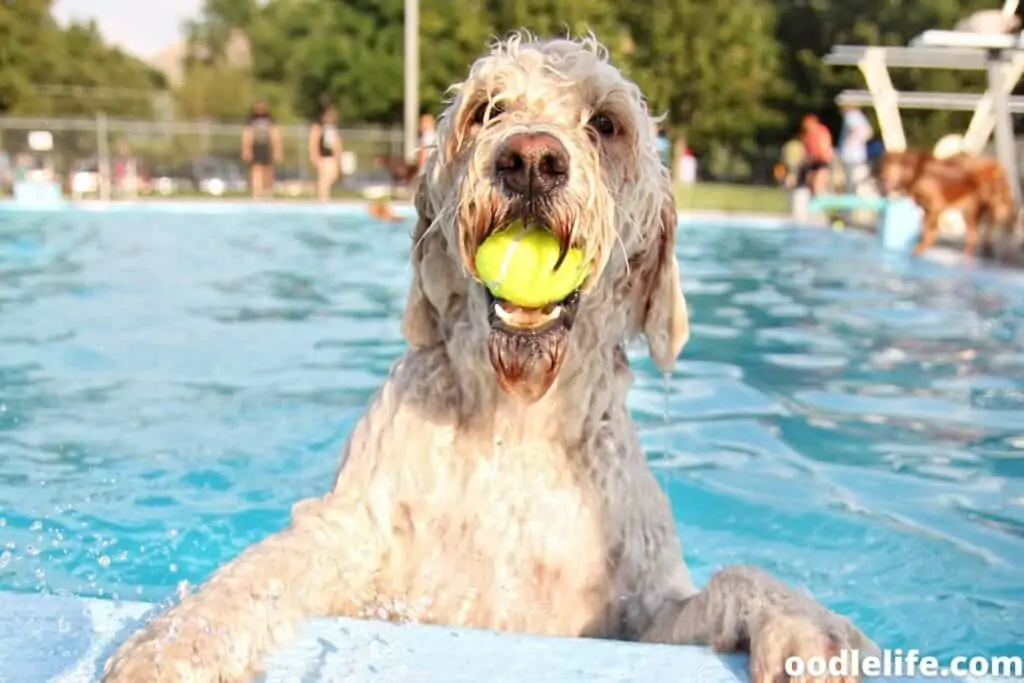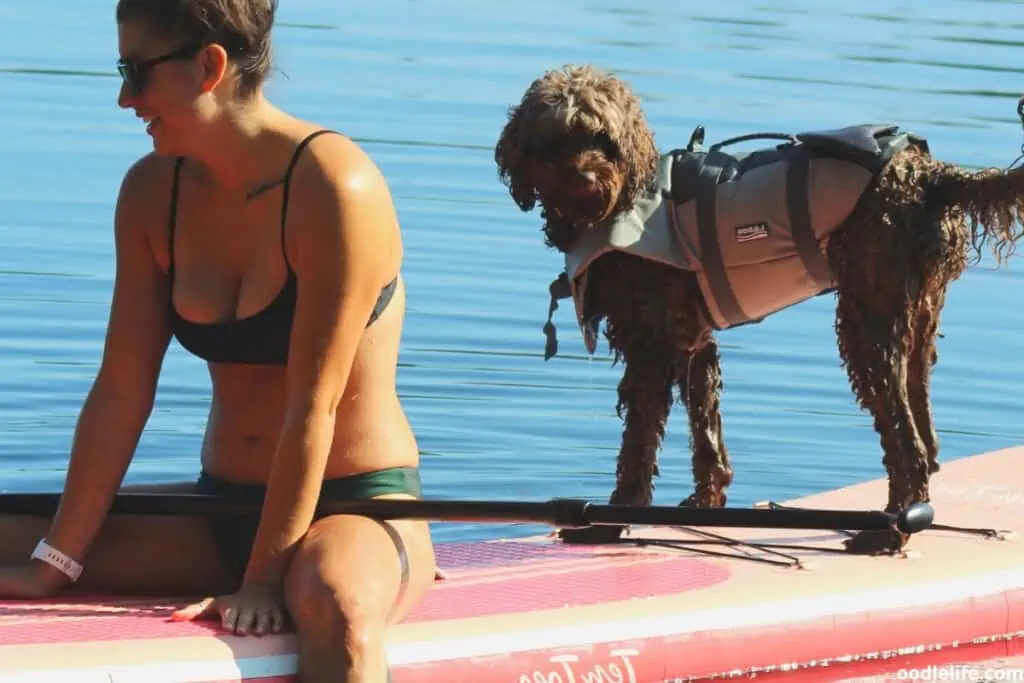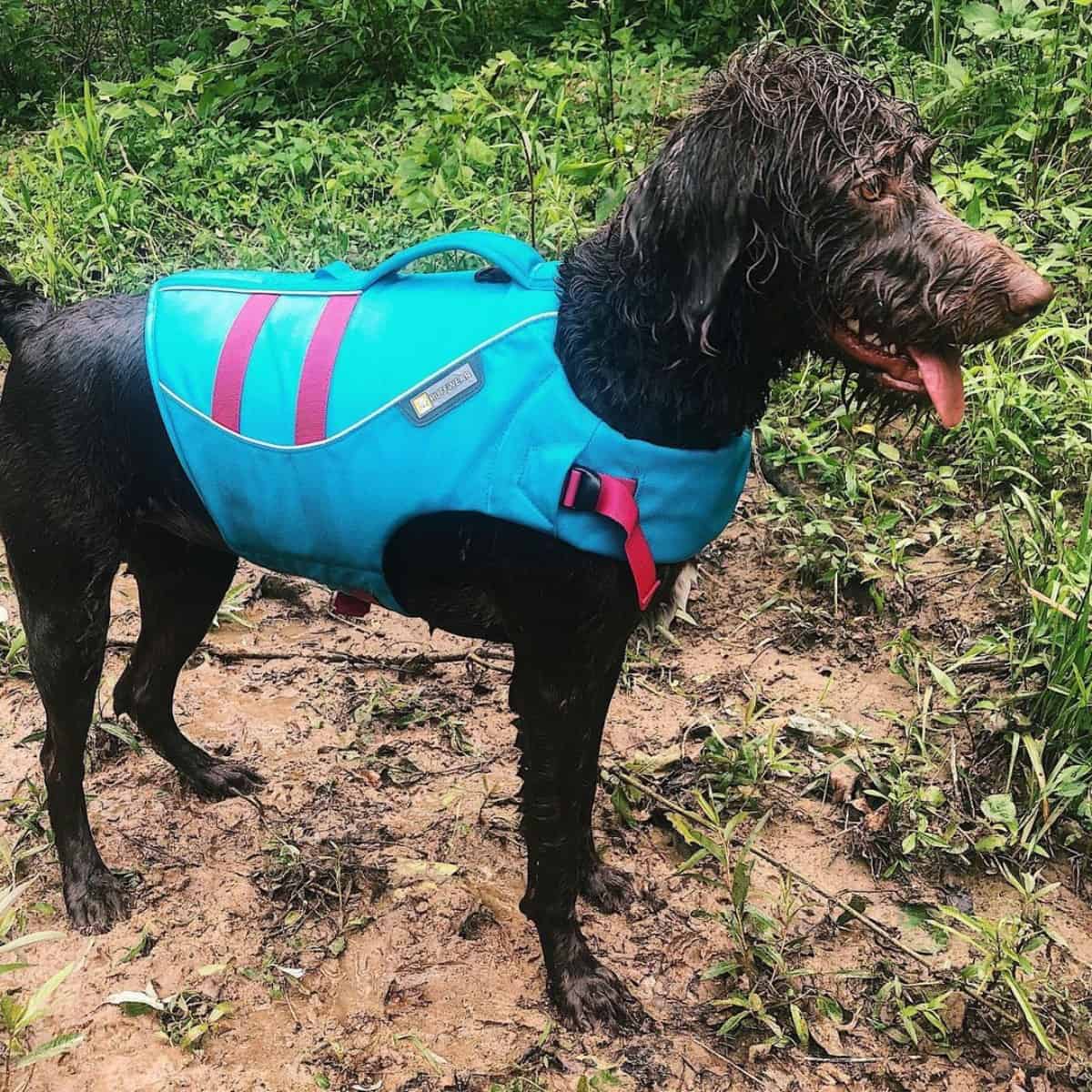Do Labradoodles Like to Swim? How to Get Labradoodles Interested in Water Play
When looking for the right breed of dog, think about enjoying time outdoors with your pet and going for a nice swim. If swimming is something you like, then get yourself a Labradoodle, as this mixed breed is known to enjoy playing in the water.

The Labradoodle is a very friendly and popular mixed breed between a Poodle and a Labrador Retriever. Let’s find out more about this nature-loving and water-loving canine.
Can Labradoodles Swim?

Are you wondering, can Labradoodles swim? The simple answer is yes; they can swim. They often love to be in the water. However, it will take some encouragement and training from the owner to get a Labradoodle to swim in a pool or a lake.
Since Labradoodles are a mix of Labrador Retrievers and Poodles, they come from a long line of dog breeds that love the water. Both Poodles and Labradors were bred to be water dogs and retrieve ducks after a hunt from the lake. Therefore, their mix is a water-loving breed as well.
Whether you introduce your Labradoodle to the water as a puppy or as an adult dog, they seem to take to it very naturally, and they tend to be excellent swimmers.
Nonetheless, not every Labradoodle is going to love the water, so you’ll need to encourage your dog to help him become a strong swimmer.
How Much Do Labradoodles Like Water?
Since Labradoodles come from two lines of water dogs, they are very interested in swimming, and they like water more than the typical dog.
However, how much your dog enjoys the water will depend on how early in his life your dog was exposed to swimming and how often he spent time in a pool or lake. While the average Labradoodle likes water and enjoys going for a swim, some take longer to get used to the wet water.
Here are some tips: help your Labradoodle enjoy swimming by starting her early, keeping her safe, and making sure she has fun.
For example, upon bringing a Labradoodle puppy into your home, add a few inches of water to a tub and bathe your new puppy. This will be a great introduction to water to your dog.
Before you know it, your new Labradoodle puppy will love spending time in the water.

How to Introduce Labradoodles to Swimming
Even if your Labradoodle loves the water in a tub, you can’t know for sure if he’ll take to swimming right away. You don’t know if your pup understands the mechanics of swimming and how to use his legs to move across the water.
As such, you’ll need to start slowly introducing your dog to swimming and take some baby steps. Below are some great ideas for introducing your Labradoodle to water.
Some simple introductions of Labradoodles to the water are:
- Play with a hose in your backyard
- Fill up a small pool for your kids and your dog with some water and get them to play
- Take your dog to the beach and let them play near the waves or put their paws in the water
The most important thing to remember is that Labradoodles are very intelligent dogs and are easy to train. As such, over time, you should be able to help them learn how to swim and get used to the water.
Before you know it, your dog and kids will be enjoying splashing around in the water of your backyard pool.

How to Keep Labradoodles Safe When Swimming
It will be essential to keep your Labradoodle puppy or adult dog safe when learning how to swim and even after. Even the strongest swimmer can get himself into a jam. As such, there are precautions a dog owner should take to keep their pet safe in the water.
Step 1: Create Exit and Entry Points
Your dog will need to have a clear and safe place to enter and exit the water. This will allow him to leave when he gets too tired of swimming or needs a break. With the right exit strategy, your dog will remain safe.

In a pool, you’ll need to show your dog the shallow end and the stairs they can use to enter and exit the backyard pool.
Step 2: Find and Avoid Hazards
The most important thing to remember is to never let your dog swim alone. If given the chance, a Labradoodle would go for a swim on his own. Never give him the chance to do so, as keeping him supervised is essential to avoid hazards in the water and make sure your dog is safe.
In a pool, there are chemicals and cleaning equipment to watch out for. Make sure your dog never starts munching on any chemicals or cleaning items.
When taking your dog to a lake or the sea, you’ll need to avoid fish, crabs, lobsters, and jellyfish. Keep your dog away from garbage or litter that other visitors left behind on the beach.
It is vital to make sure your dog doesn’t go swimming near any fishermen since the fishing hooks and lines are very dangerous for an animal. These are some common hazards to avoid when taking your dog for a swim.

Step 3: Take Plenty of Breaks
How long can Labradoodles swim? You’ll find that Labradoodles could swim for a while, but should take more breaks than they desire. To avoid exhaustion, heatstroke, or even sunburn, take your dog out of the water regularly and let her rest in the shade.
Typical signs of heat exhaustion include:
- Panting
- Drooling
- Trouble walking
Before your dog gets to these stages, take her out of the water for a break.

Step 4: Implement Safety Equipment
A Labradoodle would be extra safe if he has a lifejacket on. There are plenty of dog life vests out there for your pup. You can also consider getting your Labradoodle a flotation device. This way, your dog’s head will always be above the water and there won’t be any chance he’ll drown.

How to Properly Groom a Labradoodle After a Swim
If your dog has spent time in a pool, the fur will have chemicals all over it. Yet, if your pup was swimming in the ocean, there will be saltwater in her fur. As such, you’ll need to rinse off your canine in the tub.
Give her a nice shampooing in the bath. You’ll also need to clean out your dog’s ears with some ear cleaning solution to remove wax and dirt in her ears.

What If My Labradoodle Doesn’t Like to Swim?
It is still possible for a Labradoodle to just not be into swimming. Did you get your Labradoodle from a shelter? Then he may have trauma related to the water.
If you’re really determined to have your dog learn to swim, you will need to keep at it and slowly and gently train your pup to swim in the pool or lake. Practice makes perfect. Over time, your dog will start to tolerate the water and may even enjoy a soak in the shallow end.

Frequently Asked Questions (FAQs) About Labradoodle’s Swimming
Are Labradoodles known as water dogs?
Yes, Labradoodles are a mixed breed that comes from two types of water dogs (Labrador Retrievers and Poodles). As such, Labradoodles make great water dogs.
Do miniature Labradoodles know how to swim?
Yes. Even miniature Labradoodles can learn how to swim and enjoy swimming in the water. Both large and small Labradoodles are capable of swimming.
Can Labradoodles swim inside a pool?
The simple answer is yes. Labradoodles can swim in a pool. However, if they’re young, you may need to introduce them to the water and help them learn how to swim inside a pool.